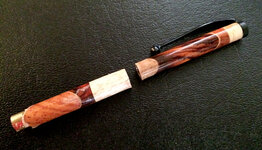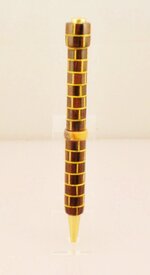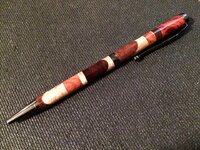tbfoto
Member
I want/need to take my pen turning to another level. Most all of my pens are pretty boring. I have so many wood blanks that are...well boring. Recently I got to see the IAP Pen Collection. Amazing work. I have no dreams of being able to do that at this point but while looking at them I see alot of segmenting of different woods together and that is something I've never done. So now while looking at all the segmented pens posted here I have to wonder....How did you come up with that design? Did that come to you in a dream or influnced by some powerful drugs? I'm beyond impressed with this kind of turning but I'm not able to "see" the design in my head. Is there a science to it or just mad luck?




